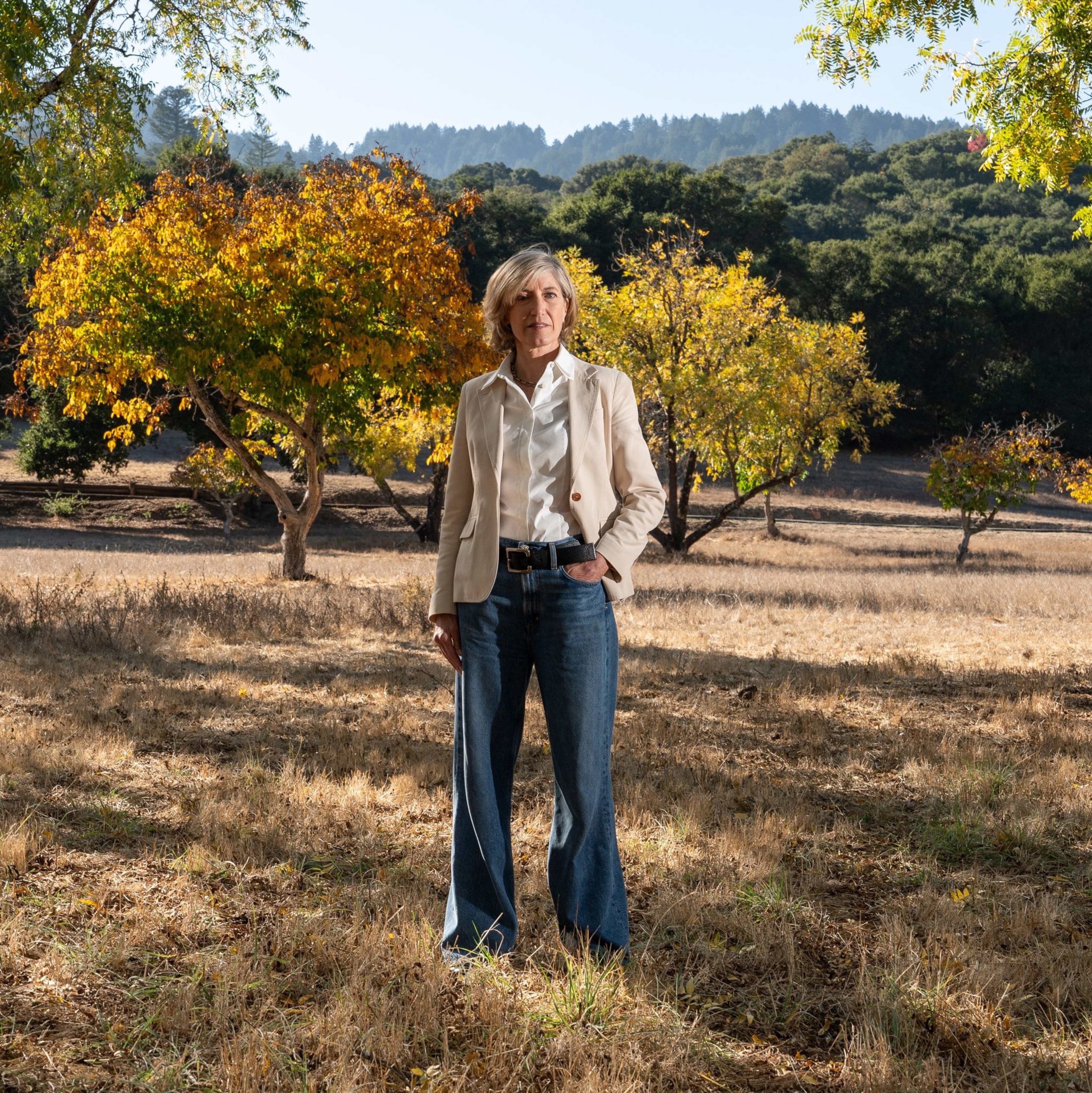Residents like LinkedIn founder Reid Hoffman and legendary Silicon Valley developer John Arrillaga have earned Portola Valley the reputation of being a “billionaire’s town.”
But the conflict rocking the sleepy Peninsula community, tucked amid redwood trees in the Santa Cruz Mountains, is familiar for local governments across California.
Change is coming for the local population in the form of new housing, which the state is demanding after years of a worsening affordability crisis. Residents are being given the choice to hop on board, get out of the way, or risk getting run over.
Portola Valley, a town of roughly 4,200 people and an average home cost of $3.8 million, is finding out the price of resistance.


State housing officials have threatened to take control from town leaders if they don’t comply with new housing production quotas, known as the Regional Housing Needs Allocation. In the current RHNA cycle, ending in 2031, Portola Valley is tasked with finding room for 253 new homes and adopting a plan — known as a housing element — to build them.
The fight over where to put those homes has fractured the town along recognizable lines and turned neighbor against neighbor. Last year, two-thirds of the town’s government workers, including the town manager, quit after a small group of anti-housing residents repeatedly lashed out at them while the incumbents lost their majority control of the five-person Town Council.
Amid the scrambling to get their housing element approved, Portola Valley residents also found out that the town had nearly run out of money because the staffing shortages combined with threats of lawsuits only increased the volunteer council’s reliance on outside consultants and lawyers.
Meanwhile, the price of the town’s contract with the embattled San Mateo County Sheriff’s Office (opens in new tab), which provides law enforcement services, is expected to jump 57%.
The escalating costs are so dire that when Portola Valley’s finance committee met last month, it considered the possibility of dissolving the town government altogether and folding it into that of the county.
Even those in the pro-housing camp aren’t sure the state’s single-minded focus on the issue has been worth the collateral damage.
“It’s essential that Portola Valley contribute its part in addressing the housing crisis, because it is simply the right thing to do,” said outgoing Mayor Sarah Wernikoff. “But the state’s one-size-fits-all approach to low-income housing is impractical in a market like ours.”
Change is hard
When the California Department of Housing and Community Development disqualified Portola Valley’s housing plan in April, it looked to outsiders like a NIMBY town was being punished for dragging its feet. State officials rejected the plan because the town failed to follow through on rezoning sites it said could accommodate future housing.
In reality, Wernikoff and the previous Town Council began working on the housing element two years before the 2023 deadline. Jeff Aalfs, who will leave the council in January after a 13-year term, said Portola Valley’s leaders took the assignment seriously and set out to foster a good relationship with state officials.
But whenever the issue of redevelopment came up in public meetings, things took an ugly turn.

“Housing always turns into a total firestorm here,” Aalfs said. “People who didn’t have a full understanding of what was going on would show up and say they didn’t trust us. I think it’s driven by the general feeling that people just don’t like change.”
More than 81% of the housing stock in Portola Valley is single-family homes, many on lots of an acre or larger. Moreover, the town’s general plan emphasizes low-slung buildings and minimal outdoor lighting so that the community blends into the surrounding forest.
Those who spoke out against the housing element expressed concerns about fire evacuation routes, erosion of the town’s character, and Sacramento’s political overreach. Some issues would get litigated over and over again, Aalfs recalled.
The bickering reached a crescendo in 2023, when three change candidates won seats on the council. Their election would upend years of work on the housing element.
“Frankly, people were anxious,” said Judith Hasko, one of those candidates, who is now Portola Valley’s vice mayor, in addition to her day job as a lawyer in the life sciences industry.


“Some people have lived here for 30, 40, 50 years without much change, so the scale of the [state] requirements were truly tough for them to contemplate,” Hasko explained. “There were a lot of unknowns to some really good questions being raised.”
Shortly after taking office, Hasko voted for a version of the housing element but against a subsequent expansion (opens in new tab). While the plan went to the state anyways, critics say the scrutiny applied by the new council majority dragged the process out.
“We can’t take forever to think of the perfect solutions,” Hasko said. “But we also can’t just rubber-stamp everything just to meet a timeline for the sake of meeting a timeline. What people are seeing here is us struggling with that reality under a severe time constraint.”
While 253 units might not seem like an undue burden, large apartment buildings don’t fit neatly on the mountainside or in public fields with no surrounding infrastructure. Moreover, Portola Valley is bisected by the San Andreas Fault.
But not every opposing view was as nuanced as that of Hasko, says Rebecca Flynn, who last week won one of two seats on the council. After moving to Portola Valley in 2000, Flynn founded PVForum, the town’s preeminent online forum, giving her insight into the discourse.
“We have a huge problem with misinformation and revisionist history online,” Flynn said. “Town officials were getting portrayed as people who were for unlimited zoning and some people felt emboldened to speak in incredibly disrespectful rhetoric.”


Carter Warr, who lost in last week’s council election, was sharply critical of town leadership, although he denies ever crossing the line. Warr, 64, moved to Portola Valley in 1988 because it reminded him of his rural home in Oregon. Today, he still keeps horses at the front of his house and his architecture firm remains next to the town’s only grocery, Robert’s Market on Alpine Road.
Despite his opposition to the Town Council and state mandates, Warr isn’t a stereotypical NIMBY. In fact, he’s not one at all. He helped design the Willow Commons, a 13-unit multifamily residential community for adults with special needs, soon to open down the street from his office. Two decades ago, he also helped build workforce housing, primarily accessory dwelling units, for the town’s college-prep boarding school.
Warr says there is no shortage of people in town who could use new housing. He, himself, can’t even get on the waiting list for the local senior living facility. “There would be huge support for housing that serves the community rather than just dropping 70 units out of the sky onto one lot,” he said.
Arrested development
While philanthropic projects like the Willow Commons pop up, the town’s real estate market still incentivizes production of single-family homes, according to Aalfs, whose career in green energy and construction allowed him and his wife to build their dream home in Portola Valley in 2007.
The town — which has barely managed to balance its books through a combination of service cuts, fee deferrals, and reimbursements from other funds — is unlikely to subsidize any development any time soon.


As for its zoning control, the town has until Nov. 26 to provide a response to HCD’s requested revisions (opens in new tab).
“People were worried that the state laws were going to force us to build more, when in reality, I’m worried that we’re going to get absolutely no building as a result of this process,” Aalfs said.
Flynn, who takes office on the council in January, echoed skepticism that any state-mandated housing would be completed by 2031 but emphasized that this shouldn’t stop the town from acting, because “not everyone in town is a billionaire.”
According to a community survey conducted by the Association of Bay Area Governments, 13% of households in Portola Valley spend 30%-50% of their income on housing, while another 13.5% spend more than half.
Looking out his kitchen window after Election Day, Aalfs said he’ll be relieved to get those countless meeting hours back to himself once he hands over his council seat to Flynn.
“You know, I think the people most upset over new housing are usually the ones who would struggle in today’s market,” he said. “Maybe they feel like they’re being pushed out.”


